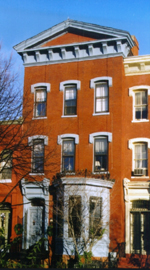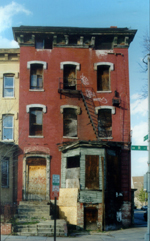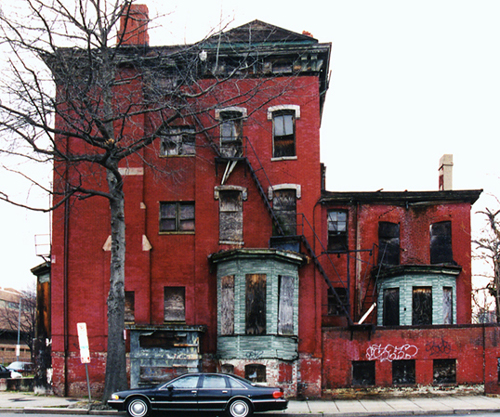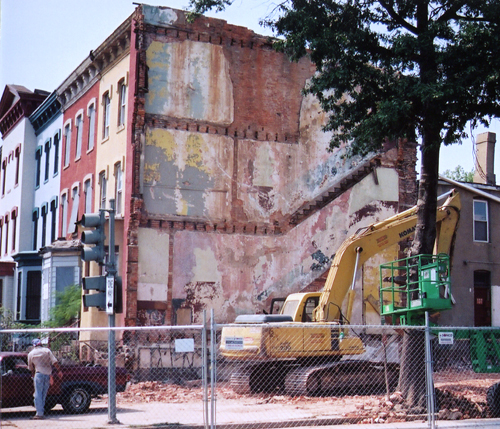
Click the Thumbnail To View A Larger, High Resolution Image.
901 R STREET NW: AN APPRECIATION
SEPARATED AT BIRTH
"You have then received a letter from your brother?" inquired I.
"No," said he, "and that especially makes me uneasy."
"But how do you know that he is suffering?"
"Because, for the last few days I have been suffering myself."
"Excuse my never-ending inquiries, but that does not explain the cause."
"Do you not know that we are twins?"
-Alexander Dumas, The Corsican Brothers (1845)
If Lucien the Corsican feudist was pinked with a foe's sword and Louis, the Parisian philanthropist writhed in pain, it was a message of hope. It tells us that family and blood ties run far deeper than the circumstances which separated the de Franchi twins once they were parted by a surgeon's knife.
These twins of the 900 block of R Street NW were born identical but lead lives as different as Lucien and Louis. Beginning in the Grant or Hayes Administration, a remarkable row of perhaps 10 houses stretched up R Street from the corner of 9th Street to mid-block. This row was not a string of identical houses. Rather, it was an integrated design suggesting a single, palace-like structure. While each house in the row had elegant lines, the middle and end houses were larger, set slightly closer to the street, and had higher, more elaborate rooflines to suggest towers at the end of wings. The easternmost house had what is the apparent name of the row, Arlington Terrace, carved in stone just above the first story.
The pictured twins are the "bookends" of the row. In closeup, the westernmost house's window frames show the abundant detail which characterizes the row. The eyebrows above the third floor windows have curved lower edges while those on the second floor have points.
But, if Dumas' twin theory is to be believed, what pangs of anguish the westernmost house must have felt at the calamities that have befallen its eastern twin!"


